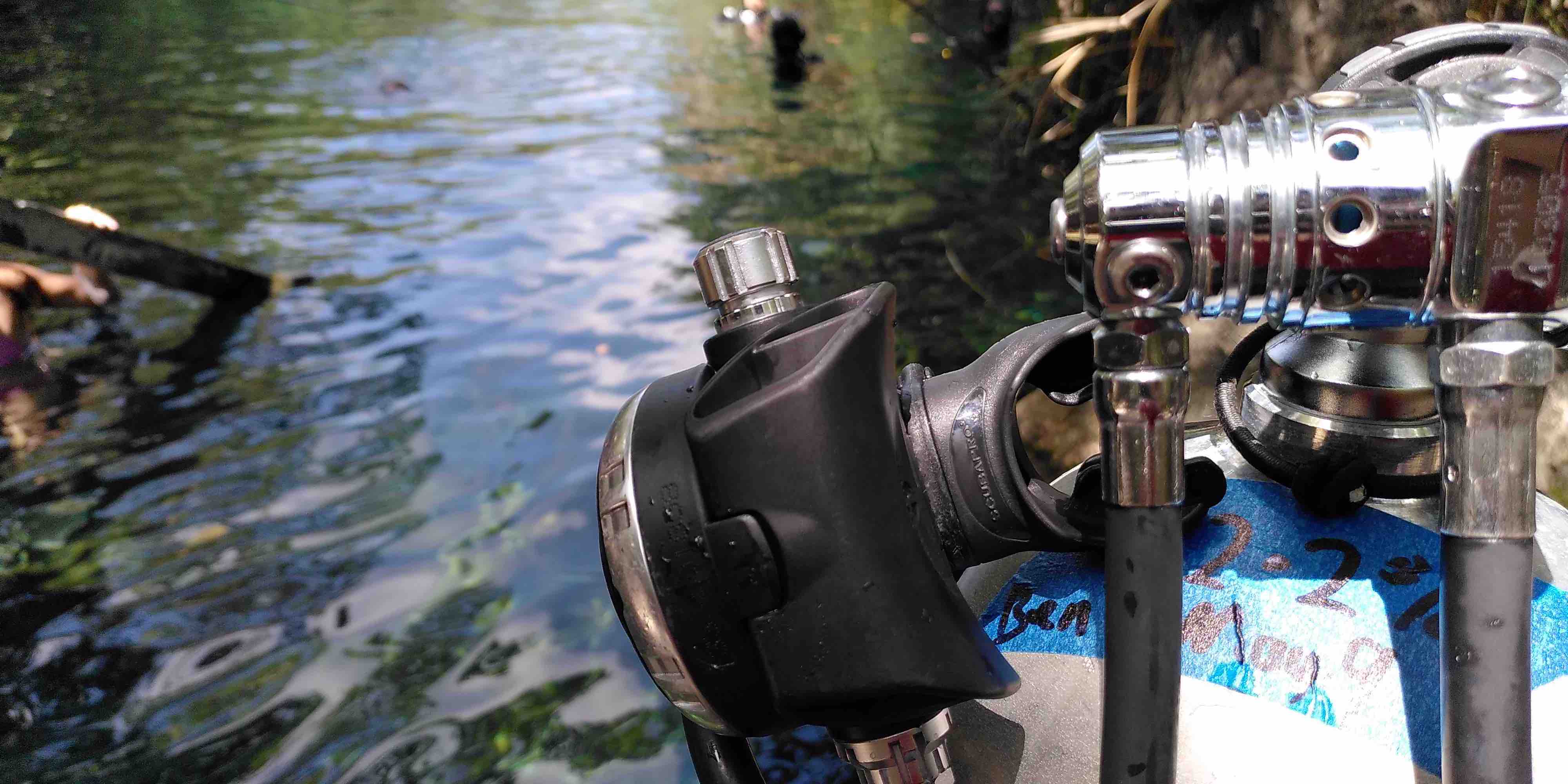
Intro to cave diving in Cancun
I have several years of experience in sidemount diving (wearing two air tanks on the side, instead of on the back, so you can fit into caves with low ceilings easier), so it was finally time to but to use for its original purpose. I’ve been wanting to do this for several years since I first came to Cancun back in 2017. Since then I’ve done a divemaster and technical diving training, so I’ve changed since then. I have much better undestanding of the expectations of the course, as well as what I personally get out of it.
I picked Third Dimension Diving on recommendation from a friend. It was a good choice, upon arrival at their shop, I was impressed by the organization and cleanliness of their shop.
Before starting the actual course, I had a couple of days of cavern touring with a couple of other instructors who weren’t going to teach my course. It was an opportunity to get used to my sidemount again, after a few years of my backmount, as well re-relearn the S drill and air sharing, both of which I was very out of practice. Without either of these days, my main training days would have been impeded by procedures that weren’t related to cave diving. I recommend anyone who is doing cave training to practice the basics beforehand, this will let you focus on the actual cave stuff during the course, and you will get much more out of it. My trim was occasionally criticised, something I had to work on over the next week. On the first day of the actual course, we did some theory and practiced the valve and S drill, before doing a cave dive the one third of two thirds rule, light failure and air sharing on the way out. A relatively easy day.
Second day was the hardest. We did line laying to the main line, and air sharing in the cave, across 4 dives. This was overwhelming to begin with, as both are skills that require practice to acquire, so being introduced to two in one day meant task overloading (unless you are well practiced beforehand). That and 4 dives in one day is exhausting meant that I severely drained for the rest of the evening, barely moving out of my hotel room. Although air sharing was doable, I found the line laying hard. Usually in recreational diving, we rarely have to perform manual tasks, since we’re usually looking around at things. However line laying requires both a manual task (wrapping around a rock) and bouyancy. Most people can do at least one, but not both. The act of physically manipulating the reel and line sends you in all sorts of directions, that combined with insufficient bouyancy caused my air consumption to rocket.
The third day was a day of properly acquiring the skills from the previous day. It was still hard, but it was only 3 dives instead of 4, so it was physically much easier. My line laying was still poor, but its a skill that requires practice, and I usually don’t perfrom well skills that I haven’t practiced. We were also introduced to navigation with the famous line arrows and cookies you often see in cave diving videos. We also did out of air sharing whilst wearing a mask to simulate no visibility. It doesn’t get more hardcore than this.
On the fourth day we did no visibility no line navigation. Its a technique for using a search pattern to find a line if visbility completely fails. My instructor warned me that without visibility, I’m going to understimate how far I will swim, and he was right! Once I did find the line, I found the technique of pointing the bolt snap back where you came from useful, as it allowed me to decide which direction was leading out (remember I’m wearing a blacked out mask at this point).
On the final day we did lost diver procedures, including going back slightly to search for someone and calculating how much gas to use for the search, whilst using the cookie to leave directions in case the lost diver finds the line.
Overall the course was challenging as was to be expected. The number of dives are high (hopefully I never have to do 4 dives in one day again) and the concepts come thick and fast. It goes without saying the caves themselves were beautiful. A couple of memorable ones were the long corridor just underneath an undisturbed halocline that resembles a river, and another tunnel that went from 20 metres depth up to 6 metres, and back down again. Being yet so close to the surface, yet still being in a vulnerable position in a cave was humbling.
